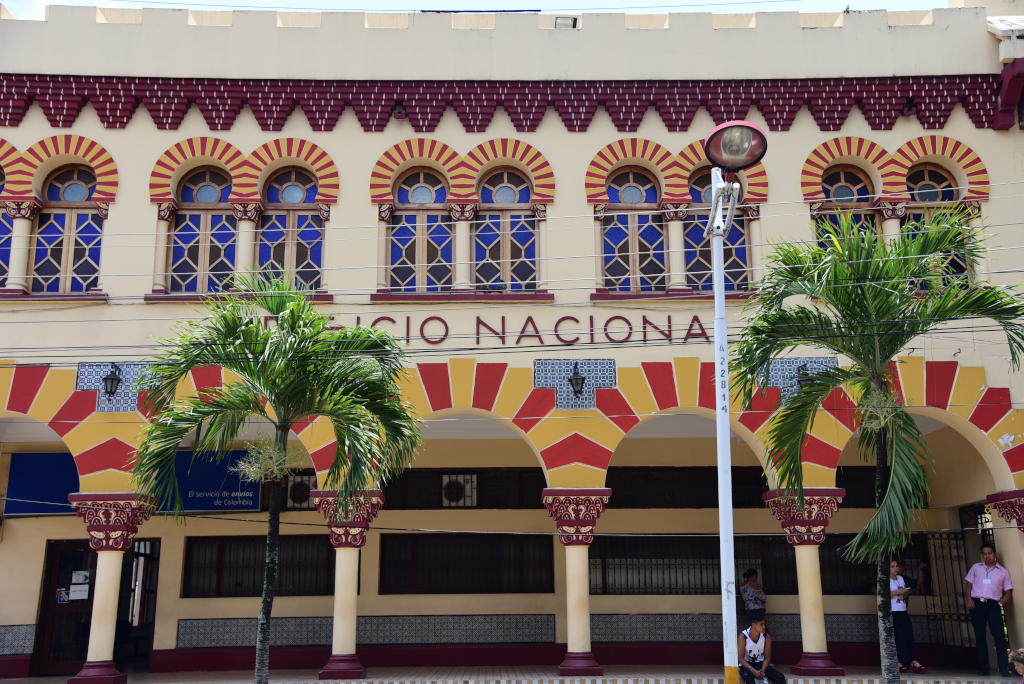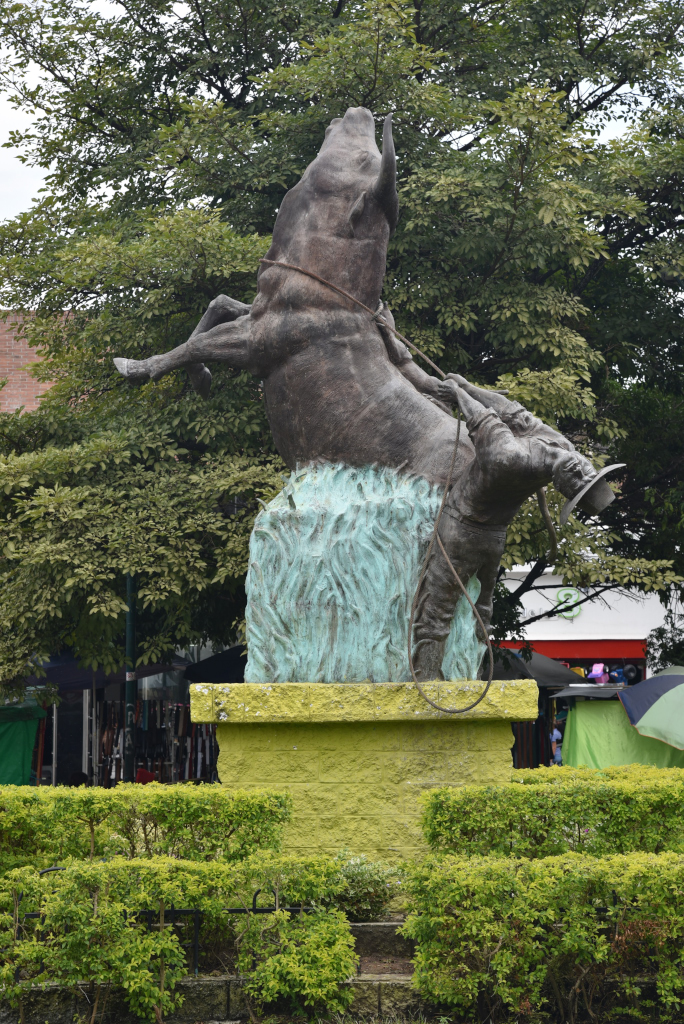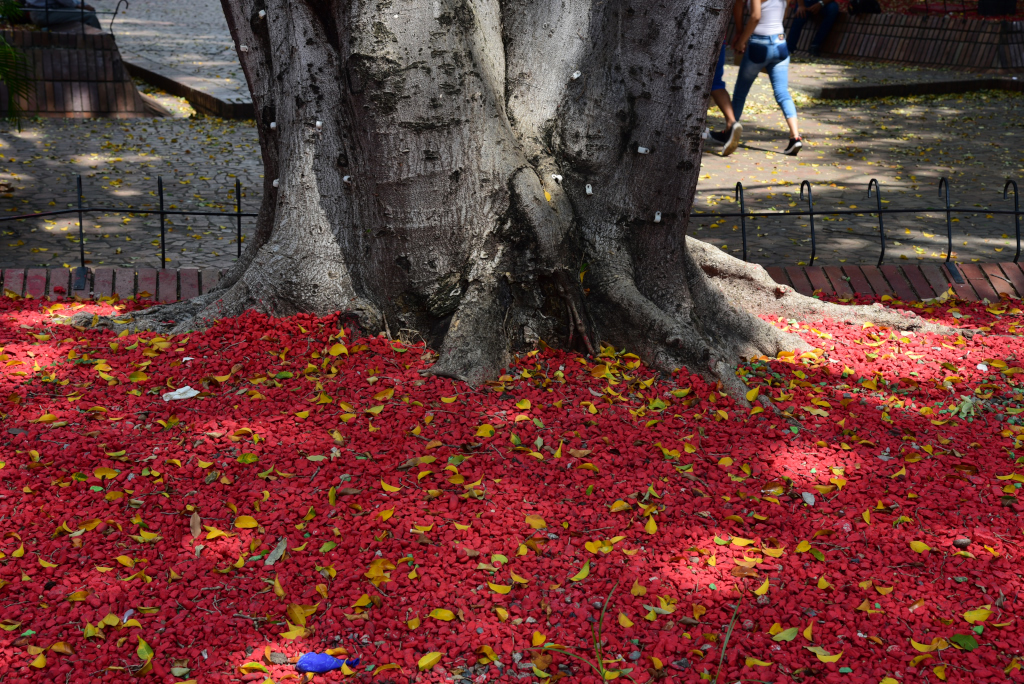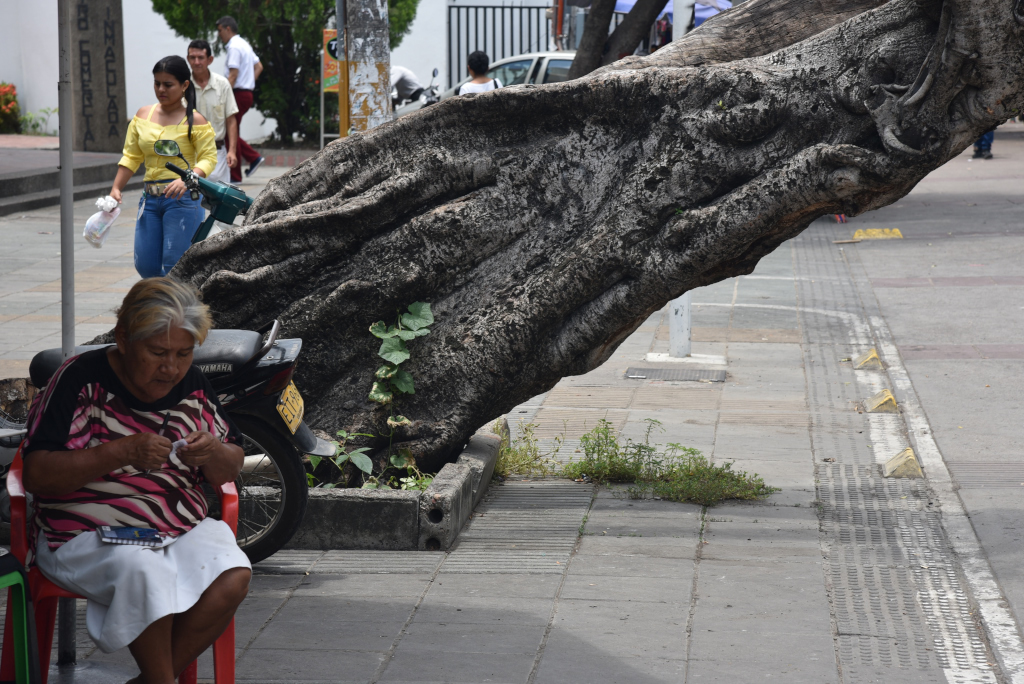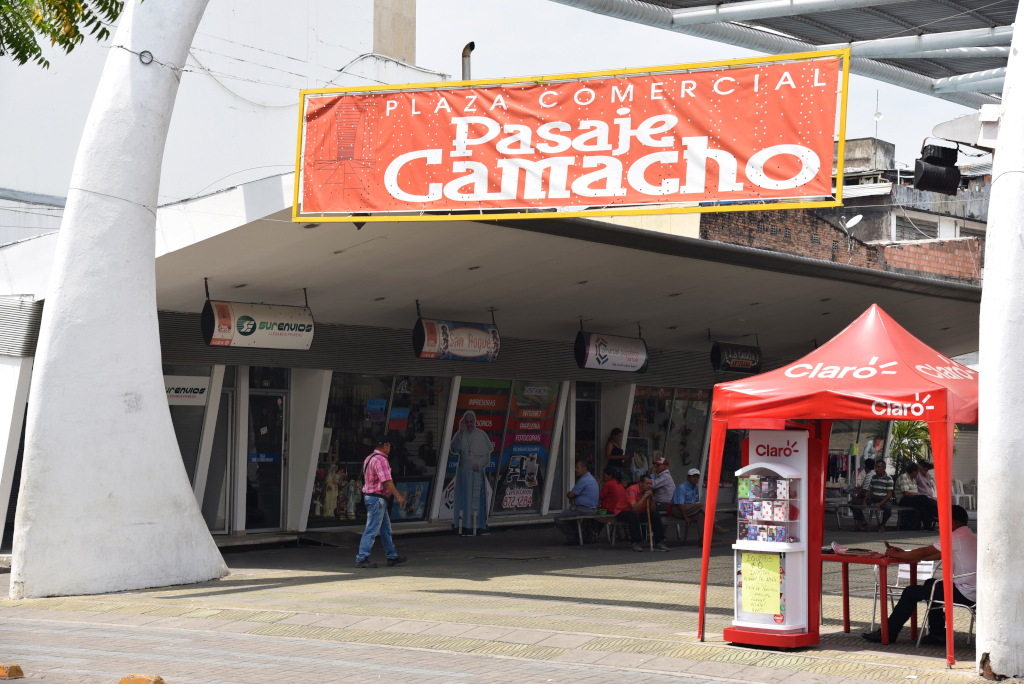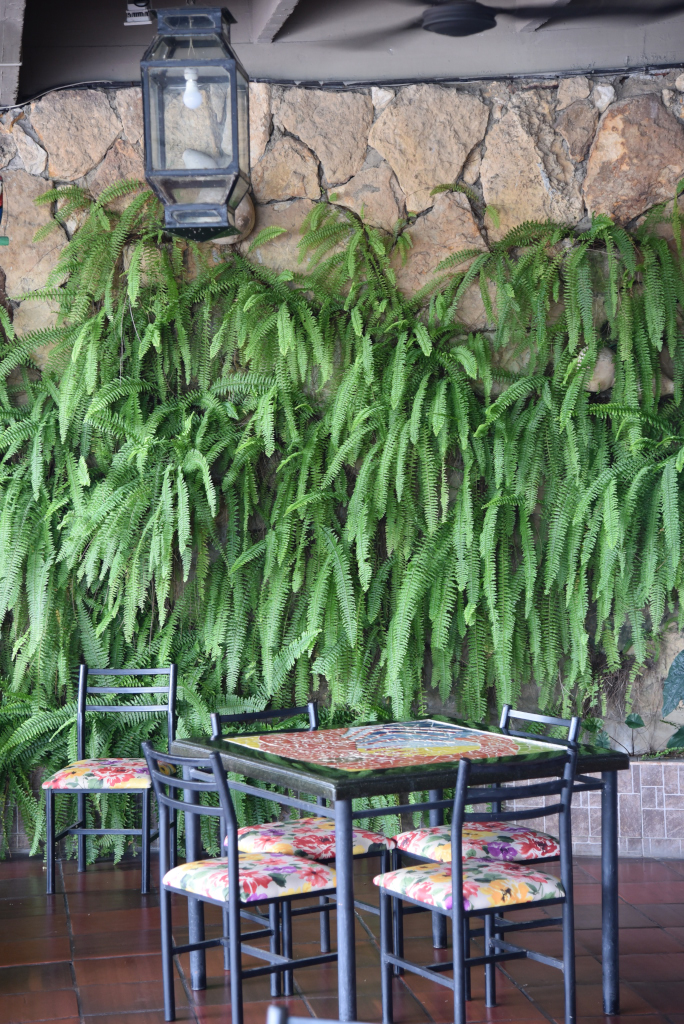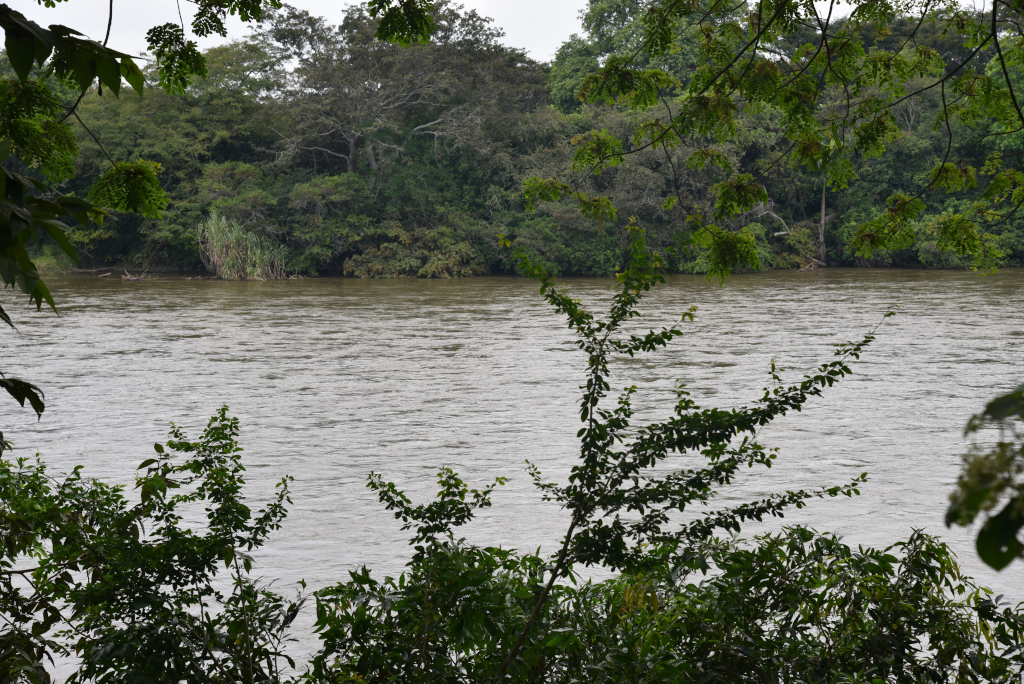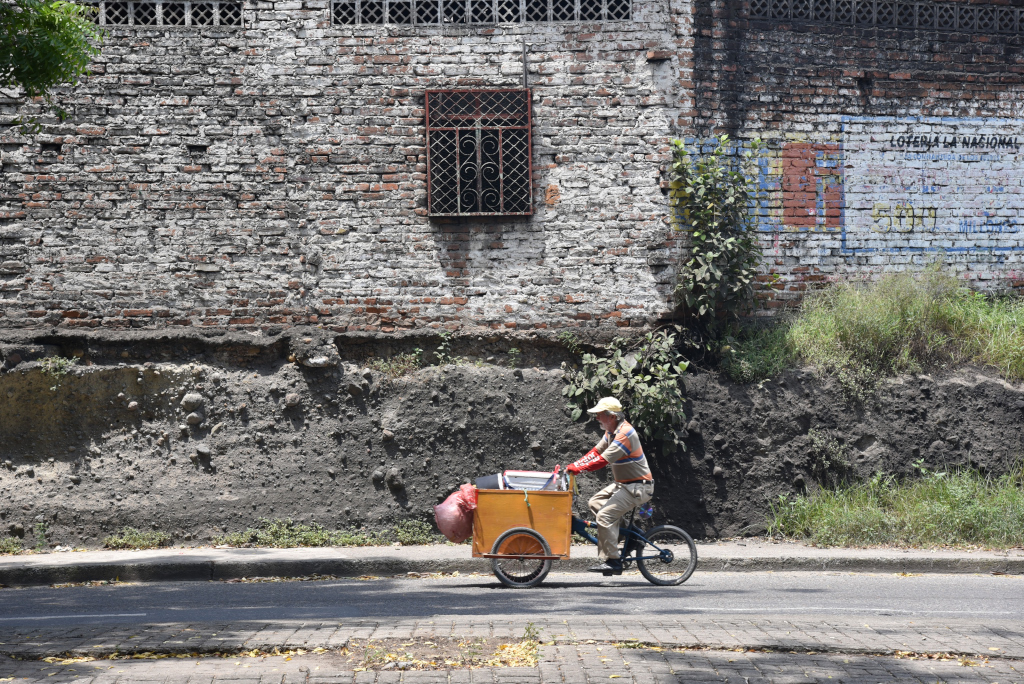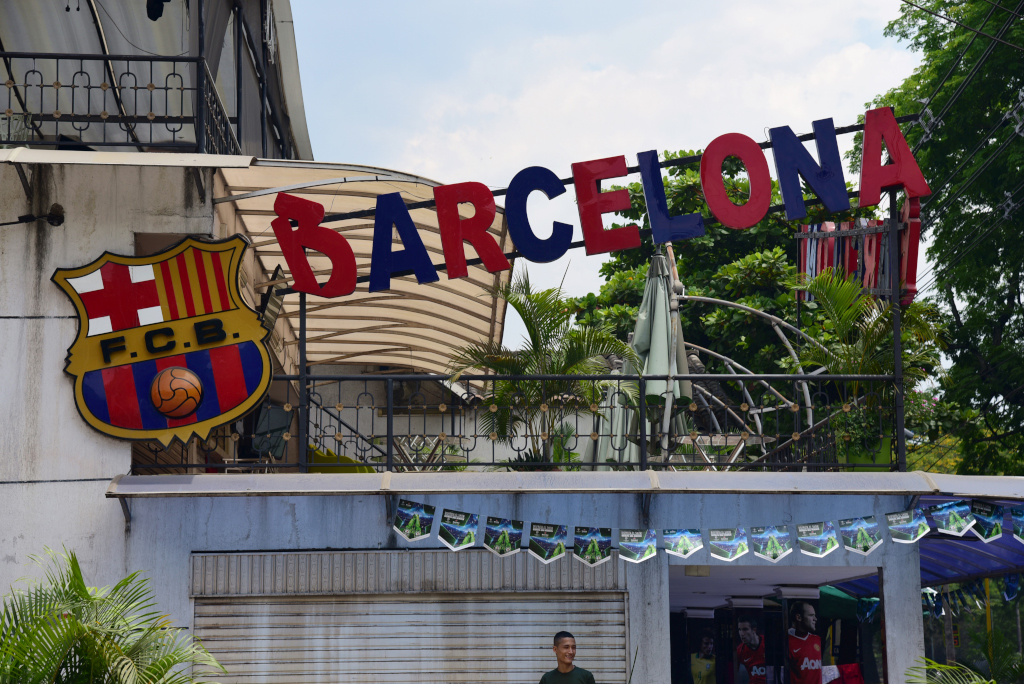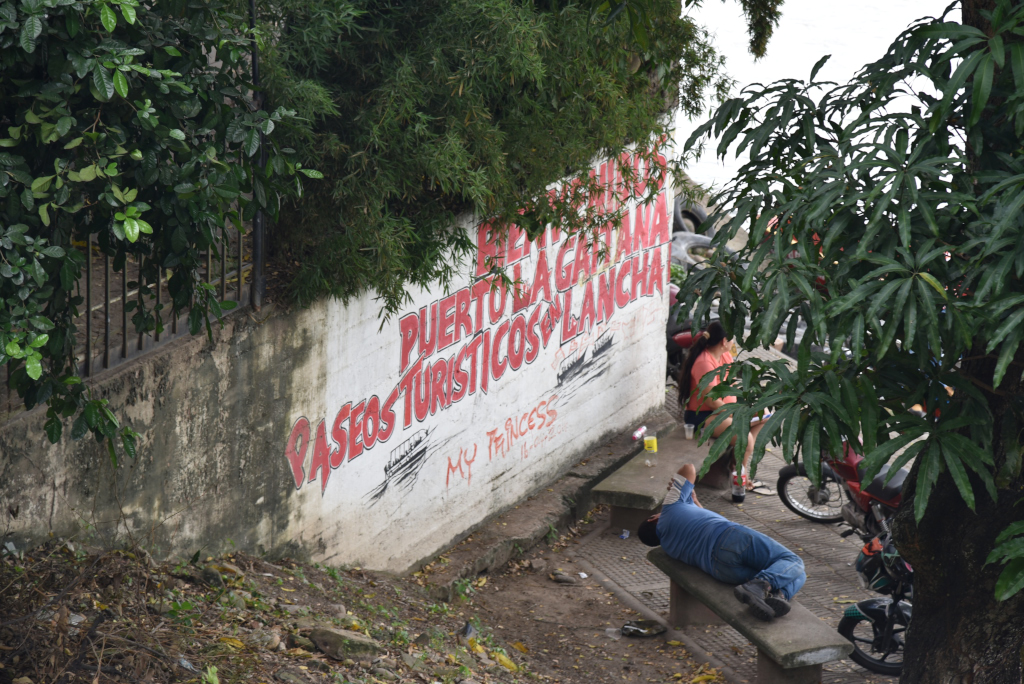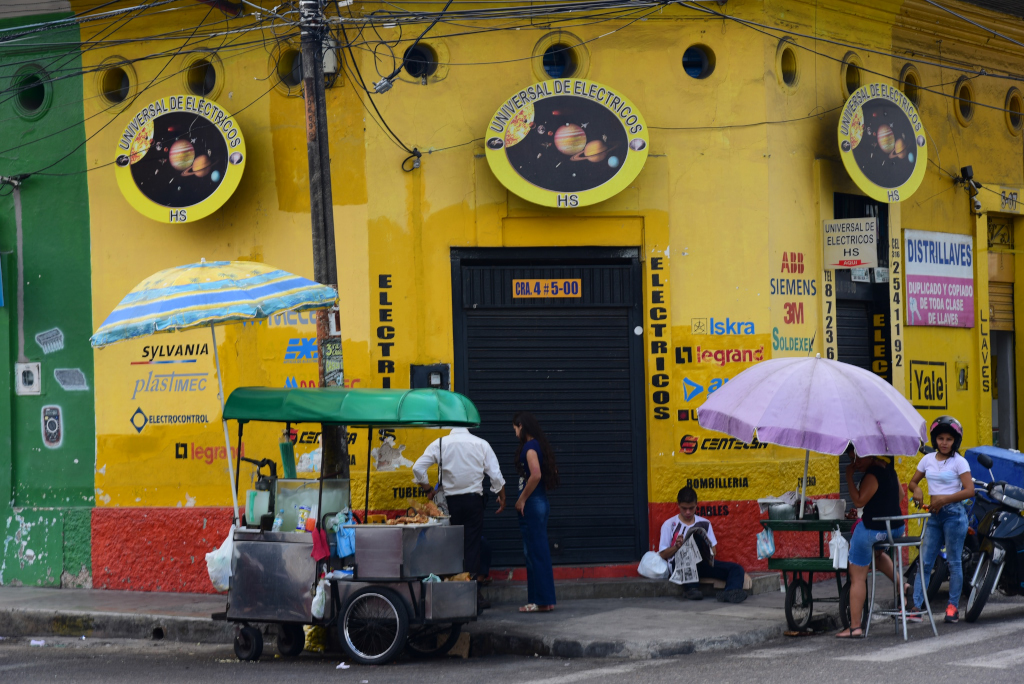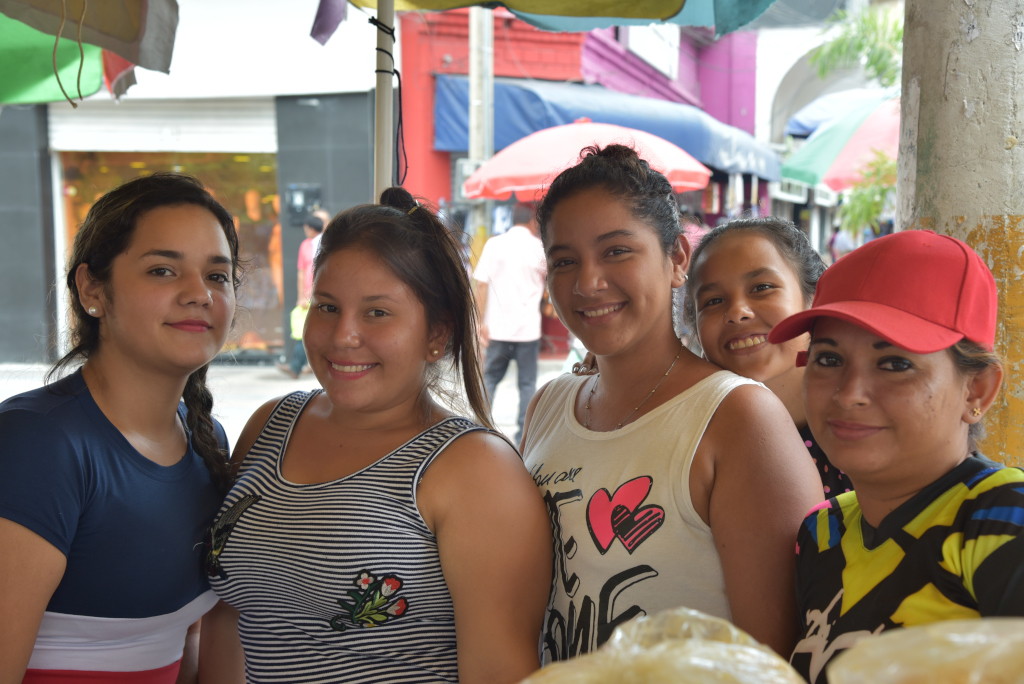March 16, 2018
After all the hullabaloo about the hotel room, I have to admit I slept quite well, without any noise waking me up, at least no excessive noise, especially considering that the hotel is almost fully booked for the hospitality conference. The window lets in only filtered light, and the blinds are quite effective. Best of all, the air conditioning is both very effective but not too loud.
Breakfast on the fourth floor is acceptable, but hardly worse than anything I would encounter in the outside world – not that the industrial area the hotel is located in is rife with eating establishments. Some writing, trolling Facebook, and then off into the real world to see what Neiva really looks like during the day, getting a quality local coffee somewhere, then heading off to the desierto de Tatacoa.
The staff at the reception tells me they may have just the room for me. Room 209 features a king-sized bed in a much larger room, with a much larger window and bathroom, and best of all, room for a desk, which I can take from the hallway – perfect! I couldn’t ask for more! I am elated!
Carrera 4 leading to the parque is somewhat more redeeming during daylight than in the desolation of nighttime, however, the street is unequivocally dedicated to automotive and metalwork workshops. The gigantic brick cathedral signals the introduction to the parque central, a small forest of trees screening the mostly institutional and financial enterprises occupying the otherwise modern and somewhat characterless buildings on the square. Just next to the cathedral, the fabulous Café La Catedral, which offers an excellent local coffee, characterized by the rich chocolate finish typical of coffee from the Huila region.
Facing the cathedral is a lengthy terracotta-roofed arcade housing a stone bench, its entire length lined with mostly men, men getting their shoes shined, waiting to shine shoes, chatting, or otherwise simply waiting. On the far end of the parque, large groups of men gather, and as a man from Medellin tells me, they are waiting for the coffee harvest to be able to begin work – and earn money again. Coffee may present a substantial source of revenue here, but it appears to be a story of boom and bust for the workers who keep the coffee plantations in operation.
A unique decorative feature of the parque is evident in the coloured gravel that is strewn over the beds in which the bulky shade-bearing trees are planted, crimson, lemon yellow, and lime green. Another one is a large pool presumably dedicated to a fountain that is currently not in operation, the bed of which is covered in its entirety in a mosaic consisting of myriad whimsical images taken from local lore.
I would like to explore the blocks around the parque central prior to continuing to the desert, and am not disappointed. The streets leading to the Plaza Civica Los libertadores are lined with shops and street vendors, vibrant with life in the way that is typical for small-town Colombia. The chorus of calls rises to a crescendo on the plaza as I point my camera at various of the female vendors manning the kiosks selling the traditional cheese crackers of Huila, jewelry, accessories as well as clothing of all sorts. Competition arises for who will get their photo taken, but I want to see more, namely the statue dedicated to the founders of the town in the otherwise empty centre of the plaza, followed by a children’s photo session on the other side amidst the swirling flock of pigeons.
The streets of town are happily lined with vendors of fresh cut fruit and juice, including guava, mango, pineapple, watermelon, coconut, and best of all, soursop, the best way of combatting the intense tropical heat that builds towards the early afternoon. In a shop dedicated to vegetarian foodstuffs and fresh juices, I consume one juice after another, hardly feeling very guilty about peeling out COP $2,000 each time. Fresh juices, especially of tropical fruit, are a luxury back home, although largely unavailable to begin with.
Walking around the centre of town, I get a sense of where the hotels are located that I had visited yesterday evening as well as on the net, and have to conclude that at least from the exterior perspective, I should be content with the choice I made in my current hotel, certainly after having been given a superior room on the second floor. The facades are unequivocally drab, the buildings older, and the entrances cramped and uninviting. The only downside of the Onyx is of course the general area it is located in, which would only be appropriate if you actually had business with some of the automotive workshops on Carrera 4.
The blocks north of the parque central on Carrera 5 and east on Calle 9 host a lively market-like environment for vendors, whose small kiosks line the heavily tree-lined passage at irregular intervals. On display are clothing items, snacks, cell phone covers, cut fruit, drinks, books, movie DVDs, fly traps, plastic flowers, cheap jewelry, leather belts, and so on. Pointing my camera randomly at vendors clustered next to their stands evokes mixed reactions, from welcoming, ambivalent, fearful, mistrusting, resentful, although generally very positive.
From the perspective of photographer, the adage ‘nothing ventured, nothing gained’ certainly holds true. Although beyond the concerns regarding the potential intrusion on peoples’ privacy that I try to mitigate with the usual antics, I wonder what the chance of someone playing a grab-and-run with my camera would be, despite the presence of the green-jacketed police officers at various intervals.
At a fruit stand, two men are all-too-eager to know what my camera is worth, but beyond telling them a lot, but not as much as they may think, I digress into an overarching review of camera technology, which they feign interest in, but probably really don’t care about. If you are not into photography, you wouldn’t have much use for this white elephant, unless you just wanted the cash it represents.
Then again, the chirimoya his friend is selling is a luxury in the world of fruit as well, as is probably the baby mango he is selling that comes all the way from Baranquilla. A man passing by stops momentarily to tell me I would be best to not wave my camera around, as it provides a clear invitation for theft, continuing that people here ride around on motorcycles and grab anything of value. Moreover, any street that is empty may be an ideal place for thugs to mug someone. And I shouldn’t assume that thieves have a certain look here, as they come in all sorts of shapes and sizes. Such is the reality of this country.
I embrace his words but keep moving, swinging the camera in its bag, somewhat brazenly, the act of keeping it out of sight also meaning that I would not be able to take pictures at all. And somewhere ironically, the photos are in the end neither that memorable nor that good quality.
I find the Soca cafe I was referred to at the hotel next to one of the big bank buildings, just east of the parque central. None of the tawdry denizens of the street ready to rob me of my possessions here, or at least so it would seem. The terrace with colourful furniture is enclosed by a series of planters bearing delicate flowers. Inside, two young and somewhat ambivalent workers prepare coffees from an extensive menu, all the same to me, particularly since I really shouldn’t be drinking any more coffee. And while the coffee is very good, allegedly drawn from the soils of Huila, it lacks the characteristic chocolate richness that is typical of local coffee.
I see the colourful open-windowed chiva used for public transport that I remember traveling in Colombia some 30 years ago. Yes, these buses are still around, although I have not seen them in the highlands, probably due to the cold. At first it seems it may have just been a one-time sighting, but then later, in the area of the bridges, I see more, obviously still very much in use for local public transport.
Crossing the circonvalar to the riverside, I ask the young police officer sprawled in his chair next to the police office as to whether the area is safe to walk and wave a camera around. He gives me an essentially vague answer, but then the question is also understandably vague. The malecón is largely exposed to the street, so shouldn’t provide much risk, provided there are no dodgy characters lurking along the way, in which case I should change my direction. And probably not go anywhere that I would be entirely out of sight.
The riverbank is seething with vegetation on both sides of this tributary of the Magdalena river, which originates further upstream in Huila. Surprisingly, bamboo grows along the riverbanks, and is also harvested here. The sidewalk separating the circonvalar and the river bank wraps around plant beds wildly overgrown with vegetation. Workers cut wood planks for the purpose of building planters to nail onto the trees, into which plants are to be planted, more for the unusual effect than for any conceivable absence of vegetation in this utterly overgrown area.
Further along, a compound is located on the sidewalk enclosing one or a series of outdoor restaurants screened from the outside world by means of bamboo fencing, and heavily adorned with arrangements of brightly-painted plates, gourds, and other artisanal objects. The tables are full, as if there were some sort of celebration in progress, the well-dressed guests focused on the tables heavily laden with food and drinks.
Even more unusually, a museum dedicated to prehistory seems to be located inside the embankment below the plaza further along, a huge statue of horses in flight suspended above.
Next door, a very luxurious restaurant set amidst a glass-encased waterfall and large mobiles of fish, the tiled inset lined with planters and facing the virile Magdalena tributary, the menu bristling with expensive seafood items far from the purview of the bare-chested locals washing their laundry in the river or listlessly sorting through their life possessions along the nearby riverside.
The thick vegetation threatens to consume the riverbank, although several longboats are visible amongst the exotic flowers and thick green foliage, presumably used for the purpose of offering boat tours of the river. Perhaps another time …
Tell-tale smoke wafts from the mouths of the young men smoking marijuana, while their cohort is busy working on the truck they are standing next to. No, marijuana is definitely not legal in the country, as I was told in Bogotá, and yes, just like back home, the once innocent substance has gone through extensive transformation into a herb that has escalated tremendously in potency.
Wandering in the blazing heat towards the centre again, I enjoy a refreshing sweet soursop juice with thick chunks of seed-bearing white flesh floating in the cup, talking to the wistful vendor about the state of Colombian traditional music to the sound of a salsa version of Pablo Milanes’ ‘Canción de que callada manera’. Yes, he sighs, vallenato has taken over the country, and even though it is tied to cultures throughout the country, not just the coast, enough is enough.
Colombia has such rich musical traditions, many of which are struggling to survive in the face of commercial music, which is of course a universal complaint.
The evening receptionist at the hotel tells me that Neiva has a restaurant area, some ways east of the parque central, with hip restaurants and bars, going by the name of El Antico. Well, let’s see what it amounts to!
I had intended on spending at most a few hours wandering around Neiva, then heading to Villavieja and onward to the desierto de Tatacoa, but it seems it is just too late in the day. And I am just too hot and worn out, not just by the heat and the excess amount of coffee I have drunk today. Better return to the hotel, get some rest, clean up, and find something constructive to do with the rest of the day. I am not quite sure what that will be, but I do know that my new room will be far more inviting, especially if the air conditioning is working properly!
The clock has struck 6 pm and it is dark. And yet outside the air-conditioned reverie of my room Carrera 4 is a hub of activity. The workers in the talleres are winding down for the evening, loitering out on the street, sitting pensively on their motorcycles, vallenato and other music blaring from sound systems, food and juice stands still in operation. I just have to try one of the knish-like concoctions I have seen in the street here before, and it is indeed an appealing version of exactly that, a baked pastry stuffed with a potato-fresh cheese mixture, very tasty in fact. I am later told that it is called an arepa, or at least that is what people in Huila refer to as arepa, which is of course very different from what an arepa elsewhere would be considered.
The immediate area around the parque central is steaming with life, loud music pumping from sound systems, traffic at a stand still, the lights bright in the shops lining the streets, the throngs filling the sidewalks. But as is the case in so many other mid-sized towns in the country, the scene is deceiving, nothing really happening other people milling around on the street, driving back and forth, with misplaced expectations …
The taxi driver taking me to El Antico confirms that there is more to the town than the centre. Beyond El Antico, there are the shopping malls further to the east, whose attraction is the fact that they are situated at higher elevations, where the heat is not so penetrating. The heat is certainly one consideration, but the nagging issue of safety that haunts towns such as Neiva is of course also a consideration, that is, people prefer to spend time inside a mall since it is more easy to secure than the street.
And Calle 7 does come as a surprise, considering how inconsequential the centre is, at least when it comes to nightlife of any sort. But who would have anticipated that the bulk of establishments can be reduced to either Chinese restaurants or mariachi studios? In Colombia, Chinese restaurants usually have some caliber, particularly compared to the competition, although don’t seem to be particularly popular. But mariachi music? Do Colombians have another side I didn’t know about? I see big placards with handsome young men dressed in regalia, in fact, the same men standing on the street, next to lifeless mannequins, advertising either their services, or advertising the services of the studios. Do these men parade the streets playing mariachi music to the unsuspecting? It all seems very unclear to me.
Thankfully, the Guantánamo Cuban restaurant offers not just a respite from the Chinese restaurants, but also the possibility of having to listen to mariachi music. The stylish establishment features a spacious terrace that the local glitterati eventually fill to the sound of Héctor Lavoe’s hits at full volume, which of course becomes somewhat anti-climactic, given that even this relatively exclusive strip of Neiva could never live up to the sensual beauty of this music. In fact, as much as I had conceived Colombia to be one of the paragon of Afro-Latin music, it has been anything but, mostly just an endless broken record of largely annoying Vallenato.
The striking Venezuelan waiter’s story provides another stark counterpoint, his salary at the restaurant at least allowing him to send some COP $50,000 pesos home every week, much more than he could do in Maracaibo earning U.S. $1.80 a day as a teacher. And he is happy to be here, although it must be heartbreaking to see how much better off his brethren Colombians are, not that the bulk of Colombians aren’t very poor as well.
Once I have finished the surprisingly delicious dish heaping with stewed beef, pork and shrimp in a tasty pepper sauce, it is time to hit Calle 7 again and see what kind of movida this neighborhood has to offer. Well, some bright, shining restaurants that should have promise, but sit empty, humble and not so humble bars that are packed with drinking men, the Chinese restaurants few a handful of clients each, the desultory mariachi studios, costumed men standing around, waiting for some opportunity – and not much else.
Time to return to my spacious, cool hotel room … firecrackers explode outside, ‘boom, boom!’, in celebration of some unknown event …

